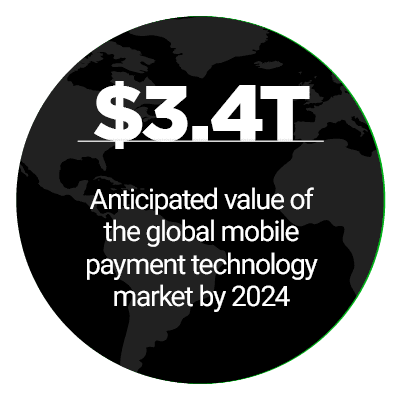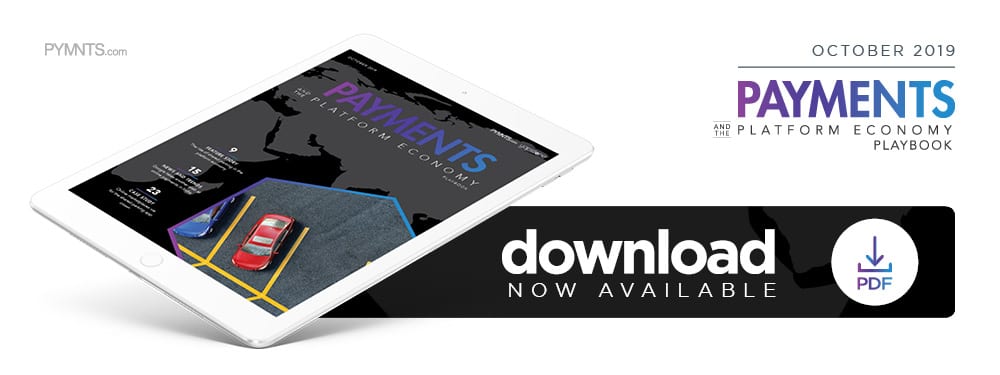What Parking Marketplaces Can Learn From Airbnb

The value of online payments for all transactions is set to blow past $6 trillion by 2024, and much of this money will be spent via person-to-person (P2P) marketplaces. However, the more comfortable consumers grow with online payments and marketplaces, the harder it becomes for platforms to keep them satisfied.
 Marketplaces need to be able to provide users with as much support, security and speed as possible when it comes to the payment experience. For some, that means supporting payment methods that seem out of the ordinary for eCommerce, such as allowing customers to pay in cash. For others, that means adding more flexibility to their online marketplaces when it comes to how sellers get paid.
Marketplaces need to be able to provide users with as much support, security and speed as possible when it comes to the payment experience. For some, that means supporting payment methods that seem out of the ordinary for eCommerce, such as allowing customers to pay in cash. For others, that means adding more flexibility to their online marketplaces when it comes to how sellers get paid.
In the latest Payments And The Platform Economy Playbook, PYMNTS analyzes how marketplaces are innovating their payment experiences, as well as how they are seeking to add new features to draw buyers and sellers away from competing platforms.
What’s New In The Platform Economy
Online marketplaces like Amazon are adding new ways for users to pay on their P2P marketplaces — most recently, the ability to pay in cash in the United States. This method, facilitated by Western Union, is meant to offer greater inclusion for consumers who still want to pay for a purchase with physical currency by relying on QR codes to confirm purchases.
 Platforms in other markets are also finding new ways to add more speed and convenience to online purchases, with four marketplaces in Europe banding together to provide better access for cross-border transactions. Cdiscount, eMAG, ePRICE and Real are all members of the group that will create a network for easier cross-border sales within their respective markets.
Platforms in other markets are also finding new ways to add more speed and convenience to online purchases, with four marketplaces in Europe banding together to provide better access for cross-border transactions. Cdiscount, eMAG, ePRICE and Real are all members of the group that will create a network for easier cross-border sales within their respective markets.
The platform economy is continuing to expand past traditional eCommerce use cases as well, and into other services that can connect users. Video-hosting site Vimeo recently launched an online platform for freelancers, for example, allowing consumers to list their services for hire. The marketplace will be open to all paid members of the platform.
For more on these and other stories, visit the Playbook’s news and trends section.
Shared Parking And The Platform Economy
 The platform economy is taking on daily experiences that have long been a source of frustration for consumers, such as parking in urban areas. Turning parking into a shared, mobile experience can help to eliminate much of the friction that drivers experience when it comes to finding a parking space in a crowded city, said Tim Wootton, CEO of P2P parking app Rover Parking. Yet, Rover Parking is far from the only company that has hit upon this realization in recent years, which is why competition to be the top parking marketplace in the platform economy is on the rise.
The platform economy is taking on daily experiences that have long been a source of frustration for consumers, such as parking in urban areas. Turning parking into a shared, mobile experience can help to eliminate much of the friction that drivers experience when it comes to finding a parking space in a crowded city, said Tim Wootton, CEO of P2P parking app Rover Parking. Yet, Rover Parking is far from the only company that has hit upon this realization in recent years, which is why competition to be the top parking marketplace in the platform economy is on the rise.
To learn more about the rise of the shared parking economy, and how apps like Rover Parking are competing, visit the Playbook’s feature story.
Marketplaces Fight For The Shared Parking Crown
The shared parking industry has become a rapidly saturated area in a relatively short time, and companies are now fighting to grow their platforms from the same consumer base of drivers, and those looking to rent their private spaces. Providing seamless services to both drivers looking for spots, and renters looking to make extra money, is only the beginning for parking marketplaces that want to achieve the same status as Airbnb in the homesharing world. This competition is only set to get more fierce, according to Braden Golub and Sameer Saran, respective CEOs of parking apps SPOT and ParkStash.
To learn more about how these apps are competing, visit the Playbook’s case study.
About The Playbook
The monthly Payments And The Platform Economy Playbook, a PYMNTS and YapStone collaboration, aims to help platform payment decision-makers identify and manage the risks and rewards inherent in optimizing their operations and navigating real-time challenges.

